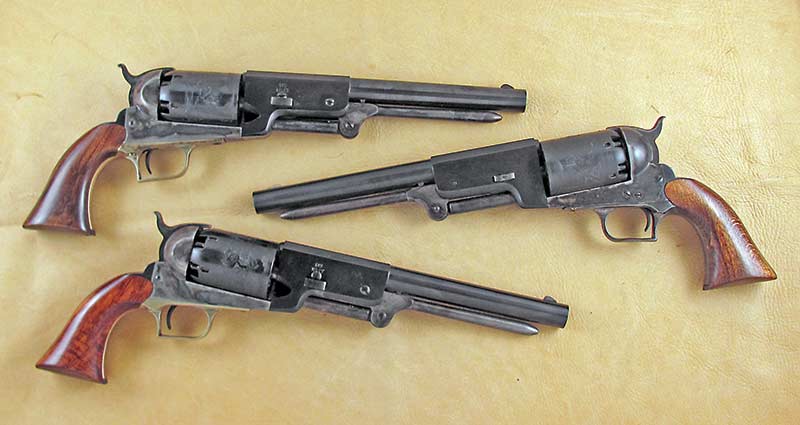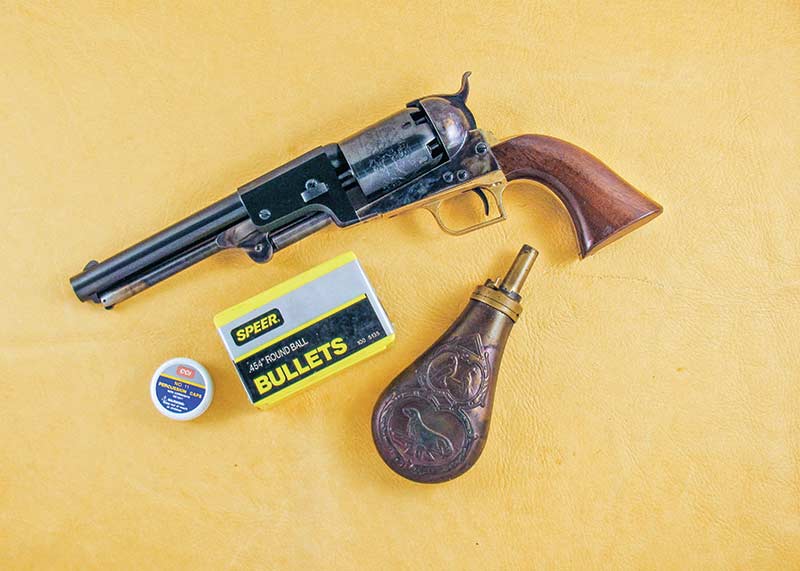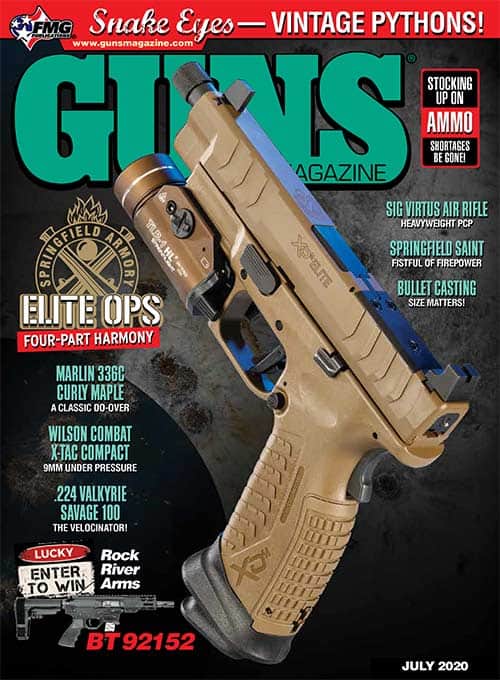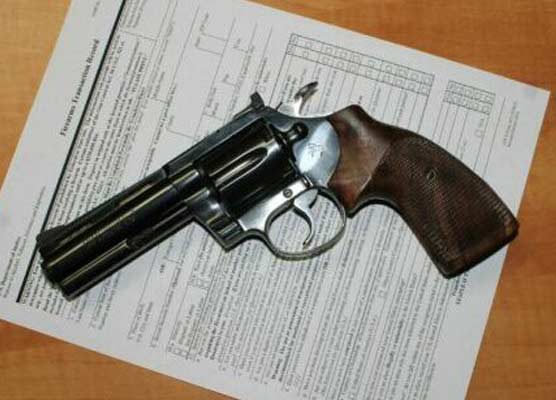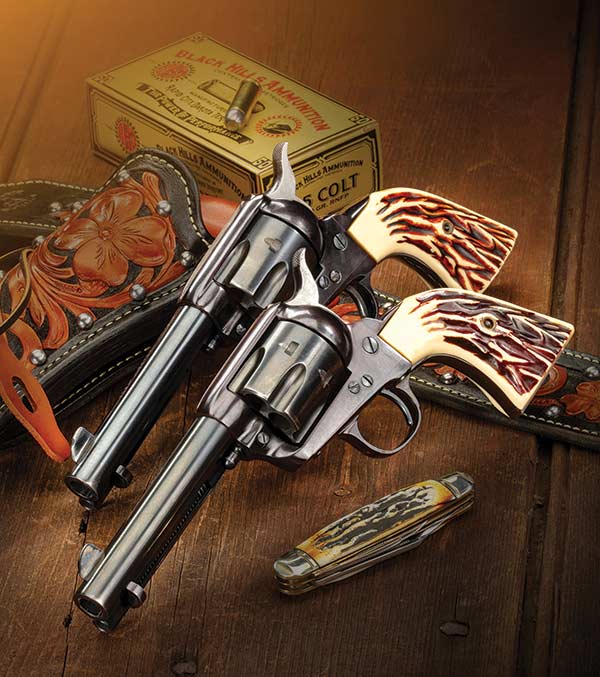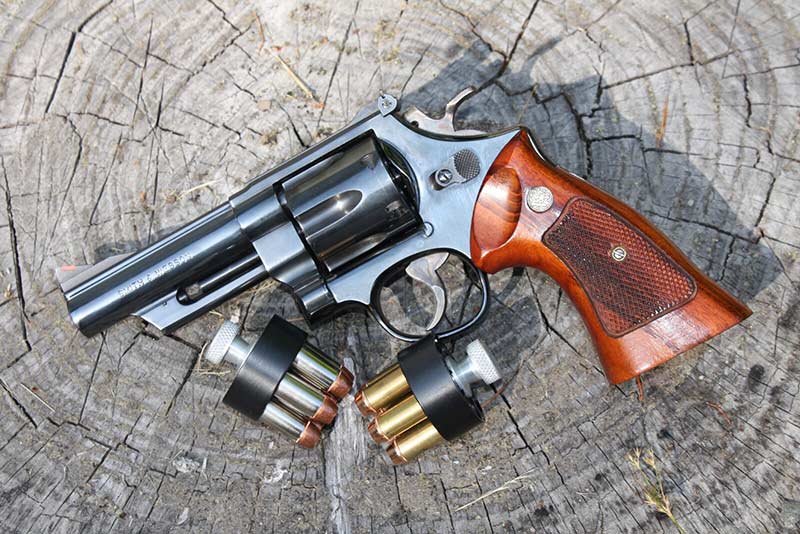The First Forty-Fours
Mention “.44” today and most people immediately think of the .44 Magnum. However, the .44 Magnum did not just suddenly appear on the scene. Its roots go back more than 100 years before the Magnum arrived in late 1955. For the next couple of Campfire Tales we will be taking a look at just how the .44 Magnum evolved.
An Idea
In 1830 Sam Colt was on board the brig Corvo to begin training as a navigator and ship’s officer. While watching the ship’s wheel being rotated and then locked into place, Sam got an idea. Using his pocket knife he made a wooden model of a revolver. In 1836 Sam’s idea became reality with his first revolver, and first successful repeating firearm, the Colt Paterson.
By 1845, Congress had annexed the Republic of Texas making war with Mexico a foregone conclusion. The Texans who had been fighting Mexico alone finally received federal help as General Zachary Taylor arrived in Corpus Christi with about 3,500 mounted troops. Taylor knew the value of repeating firearms as both he and many of his officers had used the Colt Paterson in the war against the Seminoles in Florida. Taylor gathered all the Colt repeaters he could find, however by this time Colt was bankrupt and the Paterson factory was closed. The Texas Rangers were drafted into United States service with two of those Rangers being Jack Hays and Samuel Walker. In 1846 Taylor sent then Captain Walker back to recruit volunteers from Maryland as well as acquire more Colt revolvers. The problem was there were no more Colt revolvers.
As a result of the bankruptcy Colt had nothing, no factory, no machinery, no working models and no money, however he did possess his genius and ingenuity. He certainly saw the opportunity and quickly made an improved working model from memory and in late 1846 Sam Walker ordered 1,000 “heavy” revolvers complete with several improvements. By heavy, Sam Walker meant larger in caliber than the Paterson and definitely stronger. These were to be true sixguns, six-shot, 9″ barrels, and in .44 caliber. They became known as the Model of 1847 Army Pistol, or more commonly, the Walker. The Walker literally dwarfed the sleek little Paterson. It weighed 4-1/2 lbs., with a much larger grip, square-backed brass trigger guard and a loading lever mounted under the barrel.
Horse Pistol
Walker held his Colts in high esteem, saying they were good on man or beast out to 200 yards. They were not eclipsed in power until the arrival of the .357 Magnum nearly 90 years later. However, the Walker Colt would be short-lived and more improvements would soon arrive for as effective as it was, it had two major drawbacks. Walkers were huge sixguns issued to the Rangers in pairs and were very heavy and cumbersome.
Walkers are not only quite heavy, they are very difficult to use, especially one-handed. A second problem is the loading lever often drops upon recoil. Genuine Walkers are rare and very expensive, however I have had considerable shooting experience with four replicas and they are authentic down to the point of having loading levers drop when the Walker is fired with a full house load of 50 or more grains of black powder.
The Dragoon
It did not take long for the Walker to be improved. In 1848 the Transitional Whitneyville Walker Hartford Dragoon appeared. The grip frame, the mainframe, and working parts remained the same however, the cylinder was shortened slightly and the barrel was cut back to 7-1/2″. The inadequate locking arrangement of the loading lever was also changed moving it from the center of the lever to the end with the spring-loaded male end matching the female stud on the barrel.
Colt shortened the cylinder and barrel on the Transitional Model to make it lighter and somewhat smaller bringing it to about 4 lbs. In addition to shortening the barrel to 7 1/2″, the cylinder was also shortened to accept a lighter charge of black powder and the weight was now slightly over 4 lbs. These first Transitional Walker Dragoons maintained the standard Walker grip frame but it was soon time for more changes.
The grip was also changed and now had the familiar 90-degree cut at the top of the grip frame found on virtually all single action sixguns produced since 1848. The working mechanism also changed drastically since the days of the Paterson, from 17 parts to five parts — the same basic parts used in currently produced traditional single actions. The first of the improved design sixguns became known as the Dragoons.
Dragoons, just as Walkers, were issued in pairs and by 1850 with one shoulder stock. Army regulations of 1858 proclaimed, “Two pistols and one stock for each man; one pistol in holster on belt, one pistol in holster on saddle, and stock on left rear side of saddle.” Some of the Dragoons issued with shoulder stocks also had a folding three-leaf rear sight on top of the back end of the barrel instead of relying on the V-notch mated with the front sight when the hammer was cocked.
Three Of A Kind
One of my replica 3rd Model Dragoons is set up this way. Dragoons would be produced from 1848 right up to the advent of the next improved .44 in 1860. There are basically three models of Dragoons with some overlapping due to availability of parts as Colt was never one to waste parts. The First Model had a square back trigger guard, round cylinder stop notches, no pins between the nipples on the back of the cylinder, and there was no roller on the hammer where it made contact with the mainspring.
With the arrival of the Second Model Dragoon in 1849, the trigger guard had been changed to the now familiar round shape, however some were also made with the square-backed trigger guard. Cylinder stop notches also gained the familiar and traditional rectangular shape, a roller was placed on the hammer to contact the mainspring allowing it to slide easily as the hammer was cocked, and pins were placed on the back of the cylinder between the nipples. These pins matched up with a hole in the hammer to allow the carrying of the Dragoon with all six chambers loaded without having to let the hammer down on a percussion cap.
The Third Model Dragoons all have round trigger guards and were made to accept a shoulder stock with notches on both sides of the recoil shield and at the back bottom of the butt along with protruding screwheads on both sides of the frame. The shoulder stock was locked into this affair and then tightened with a rather large circular nut on the top of the shoulder stock behind the grip frame. Dragoons would be produced slightly over 10 years or until 1860 when the last improved .44 percussion Colt revolver arrived.
See Part 2 here: the 1851 Navy, Smith & Wesson and Winchester.
